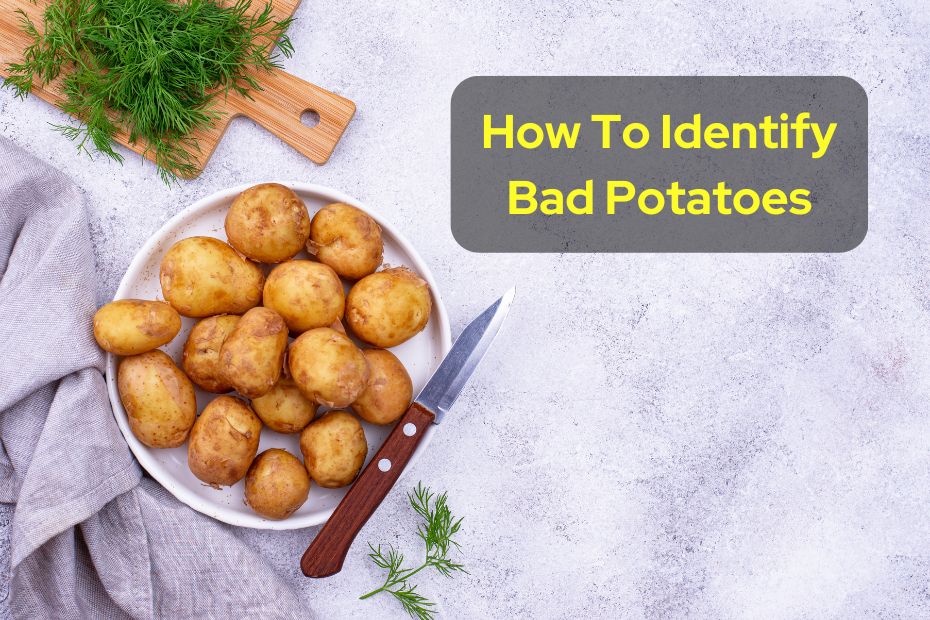Potatoes are a staple in many households, prized for their versatility and nutritional value. However, like any perishable food item, potatoes can spoil if not properly stored or handled. Learning how to identify bad potatoes is essential to ensure food safety and prevent waste.
Introduction
Understanding how to identify bad potatoes is crucial for every home cook and consumer. Whether you’re preparing a hearty stew or a side dish for a family meal, using fresh, high-quality potatoes can make a significant difference in the taste and texture of your dishes. In this guide, we’ll explore the various signs of potato spoilage and provide tips on how to spot them before they ruin your culinary creations.
Appearance
One of the first indicators of a bad potato is its appearance. Inspect the skin for any signs of spoilage, such as dark spots, wrinkling, or mold growth. While minor blemishes are normal, extensive discoloration may indicate that the potato is past its prime.
Texture and Firmness
A fresh potato should feel firm to the touch, with no noticeable soft spots or areas of mushiness. Gently squeeze the potato to assess its texture, paying attention to any areas that give way under pressure. Softness or sponginess is a clear sign of spoilage.
Smell
A bad potato will often emit a foul odor, signaling the presence of bacterial or fungal growth. Trust your sense of smell and discard any potatoes that have a strong, unpleasant scent. Fresh potatoes should have a mild, earthy aroma.
Sprouting and Mold
Potatoes that have started to sprout or develop mold should be discarded immediately. While small sprouts can be removed before cooking, extensive sprouting may indicate that the potato is no longer safe to eat. Likewise, any signs of mold growth, such as fuzzy patches or green spots, are a clear indication of spoilage.
Taste
In some cases, bad potatoes may also exhibit off-flavors or bitterness. If you notice any unusual tastes when biting into a potato, it’s best to spit it out and discard the remainder. Consuming spoiled potatoes can lead to food poisoning and other health risks.
Storage Conditions
Proper storage is essential for preserving the quality of potatoes and preventing spoilage. Store potatoes in a cool, dark place with good ventilation, such as a pantry or cellar. Avoid storing them near onions or other produce that emits ethylene gas, as this can accelerate sprouting and spoilage.
Common Mistakes
One common mistake when identifying bad potatoes is misinterpreting natural blemishes as signs of spoilage. While potatoes with minor imperfections are still safe to eat, those with extensive damage or decay should be discarded. Additionally, neglecting to follow proper storage guidelines can increase the risk of spoilage and waste.
Health Risks
Consuming bad potatoes can pose various health risks, including food poisoning and gastrointestinal issues. Symptoms of potato-related illnesses may include nausea, vomiting, diarrhea, and abdominal pain. To minimize these risks, always inspect potatoes before cooking and discard any that show signs of spoilage.
Methods of Disposal
When disposing of bad potatoes, consider environmentally friendly options such as composting or using them as animal feed. Avoid throwing spoiled potatoes in the trash, as they can contribute to methane emissions in landfills. By disposing of potatoes responsibly, you can reduce waste and promote sustainability.
Conclusion
Learning how to identify bad potatoes is essential for maintaining food safety and minimizing waste in the kitchen. By paying attention to the appearance, texture, smell, and other indicators of spoilage, you can ensure that your potatoes are fresh and safe to eat. Remember to store potatoes properly and dispose of any spoiled ones promptly to protect your health and the environment.
FAQs
What causes potatoes to go bad?
Potatoes can spoil due to exposure to light, moisture, or improper storage conditions. Bacterial or fungal growth can also contribute to spoilage.
Can you eat potatoes with sprouts?
Small sprouts can be removed before cooking, but extensive sprouting may indicate that the potato is past its prime and should be discarded.
How long do potatoes last?
Properly stored potatoes can last several weeks to several months, depending on the variety and storage conditions.
Is it safe to cut off potato sprouts?
While it’s safe to remove small sprouts before cooking, potatoes with extensive sprouting may have an unpleasant taste and should be discarded.
Can you salvage a potato with green skin?
Potatoes with green skin contain a toxin called solanine, which can cause digestive issues if consumed in large quantities. It’s best to discard potatoes with green skin to avoid potential health risks.
